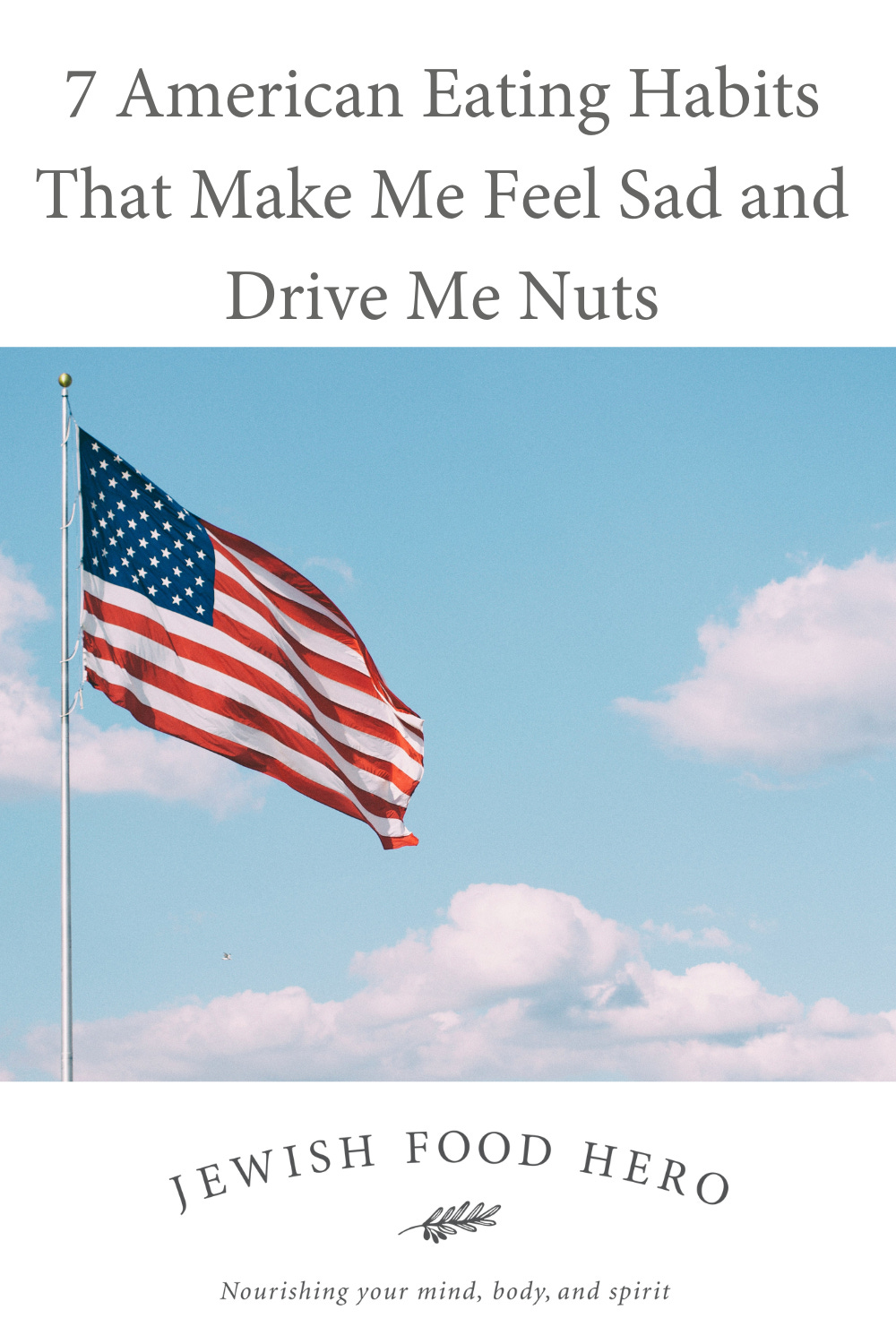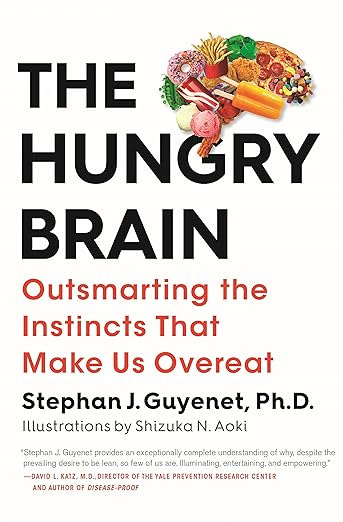7 American Eating Habits That Make Me Feel Sad and Drive Me Nuts
😒RANT: expressing strong opinions & complaints
I have been in the USA for about 2 weeks and I feel like Uncle Matt from Fraggle Rock. For those who may not remember, Uncle Matt is known for his adventurous spirit and his detailed observations of the human world, which he documents in letters back to the Fraggles. Much like Uncle Matt, I've always been keenly aware of my surroundings, particularly when it comes to food.
Since leaving the USA in 2005, I've lived and worked in six countries, returning each year to visit family. Over time, My eating habits have evolved with each country I've lived in, and each time I return to the USA, I’m struck by the distinctive eating habits and mindset here.
I don’t want to be judgmental or create a food war if anything, observing these eating habits makes me feel very sad and drives me crazy. There are also things I really appreciate and look forward to about food in America:
My favorite peanut butter
Being able to get specialist products like these egg wraps
The availability of Kosher options
Cooking with my Mom, especially familiar foods that are wrapped up with nostalgia
Cold Brew Coffee in the summer
Despite the things I look forward to about “home food,” it feels very difficult to maintain a healthy eating routine for me and my family in the USA. And if it's like that for me during my 3 weeks a year in the USA, how hard must it be for Americans who live there all the time?
So, with all this in mind, here are the 7 USA food habits that shock me every year, all of which are contributing to America’s ever-increasing crises of overconsumption, obesity, diabetes, cardiovascular disease and declining mental health.
Snacking Culture
One of the most notable features of American eating habits is the omnipresence of snacking - all the time and everywhere! And this is not anything like a traditional ‘light snack between three square meals’ structure. Many Americans are effectively grazing all day, opting primarily for packaged and processed foods: chips, cookies, and candy.
Snacking contributes to overall daily caloric intake. Healthier options like fruits and nuts are also popular in the States, but often less so. Marketing plays a significant role, with snacks frequently advertised as quick and easy solutions for busy American lifestyles.
Drinking Calories
Sugary sodas, energy drinks, fruit juices, and sweetened coffees, are daily staples for many, contributing significantly to calorie consumption in the American diet. These types of drinks bring empty calories, i.e. calories with little or no nutritional value. The cultural norm for sweet drinks starts from a young age, perpetuated by aggressive marketing strategies. Sugary drinks have an explicit link to obesity, type 2 diabetes, and heart disease.
Portion Sizes
American portion sizes are famously large wherever you are: at home, in restaurants and fast food outlets. So much so that when we go to the USA, our family of three orders just one or two main dishes to share.
When you are repeatedly served huge portion sizes over time, we lose sight of what an appropriate portion actually looks like. US restaurant portion sizes are actually now two to three times larger than standard serving sizes (!) Even American home-cooked meals tend to follow this pattern.
This normalization of serving huge quantities of food is exacerbating the obesity epidemic. When served more food, people usually consume more: this is why it’s so important to re-learn what a well balanced plate looks like, both in terms of the types of foods included and the quantities they are served in.
Too Much Food = fun
Equating indulgence with fun drives me crazy, especially for kids. From childhood, indulgent foods and overeating are connected with rewards and special occasions - this in itself is nothing unusual, as most cultures offer special foods on special occasions. But in the American context, more often than not special occasion food includes ultra processed foods, high sugar foods and lots of it! In America, it feels like the quantity of food consumed is just as much part of the indulgence as the food itself, and the special occasion is every day.
The association of over-indulgence and fun is embedded early on. A study published in the Journal of Consumer Psychology found that children are more likely to choose unhealthy foods marketed to them with themes of fun and happiness.
Overwhelming variety
Next up: the tendency to present a wide array of options during meals. Not just buffets and holiday tables - even in American households, it's common to have multiple side dishes, appetizers, and desserts alongside the main course.
In "The Hungry Brain," Stephan J. Guyenet explains the concept of “sensory-specific satiety.” Put simply, people eat more when they see a wide variety because each new food option renews their appetite. The brain’s reward system fires repeatedly, making it difficult to feel fully satisfied, leading to increased food intake.
By offering lots of options and elements to each meal, we end up encouraging people to sample everything. The result of course is overconsumption, and over time this is contributing to obesity in the United States.
Ultra-Processed Foods
Ultra-processed foods dominate the American diet, and they include so-called “healthy foods”. Industrially processed, these foods contain numerous added ingredients such as preservatives, sweeteners, and artificial flavors. Their convenience and long shelf life make them a popular choice, but they are typically high in sugar, fat, and salt.
Sugar Consumption
High sugar intake is a critical issue in the American diet. Sugary drinks and desserts aside, sugar is packed in all across the board: breakfast cereals, sauces, and even bread can have surprisingly high sugar content. It feels like sugar is everywhere and in everything!
My closing thoughts
The eating habits of American culture make it so difficult to consume food in a healthy moderate pattern. The environment is obesogenic because American food culture promotes excessive calorie intake and this presents significant personal and public health challenges.
If you live in America, what do you think about our food culture? How do you manage it, are there any particular habits or strategies you use to carve out a positive food culture for yourself and your family?
For those of you who visit(ed) the USA, how did the food culture compare to your own country?! Any observations to share?
Sadly, American eating habits have transformed other cultures' eating habits, making these habits more common everywhere. I would love to hear your thoughts; please get in touch with me to continue the conversation: kenden@jewishfoodhero.com
Am Yisrael Chai 🕊️
Kenden










It truly is a SAD diet. I don’t eat much personally, so I can take food home from a meal out and it’s two more meals for me. I realize many people are eating the entire thing in one sitting. I’m accused of eating like a bird, but I’m pretty sure I’m eating the way a human should eat.
Health conditions caused me to do my own research, so I learned to try to avoid processed foods and I attempt to eat fresh as much as possible. But it wasn’t always that way, and I was much less healthy before I learned.
We certainly do have one of the most, if not THE most, unhealthy diets in the world.
Great post, Kenden.
After our short (compared to your experiences) time abroad, I realize a lot of what you shared. With all the good food we ate in Europe, India & Israel, we did not gain weight and that is attributed to a lot of walking as opposed to driving everywhere, not snacking & eating food that was not processed.
Thanks for your insight,
Joan